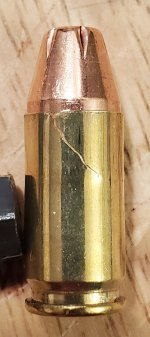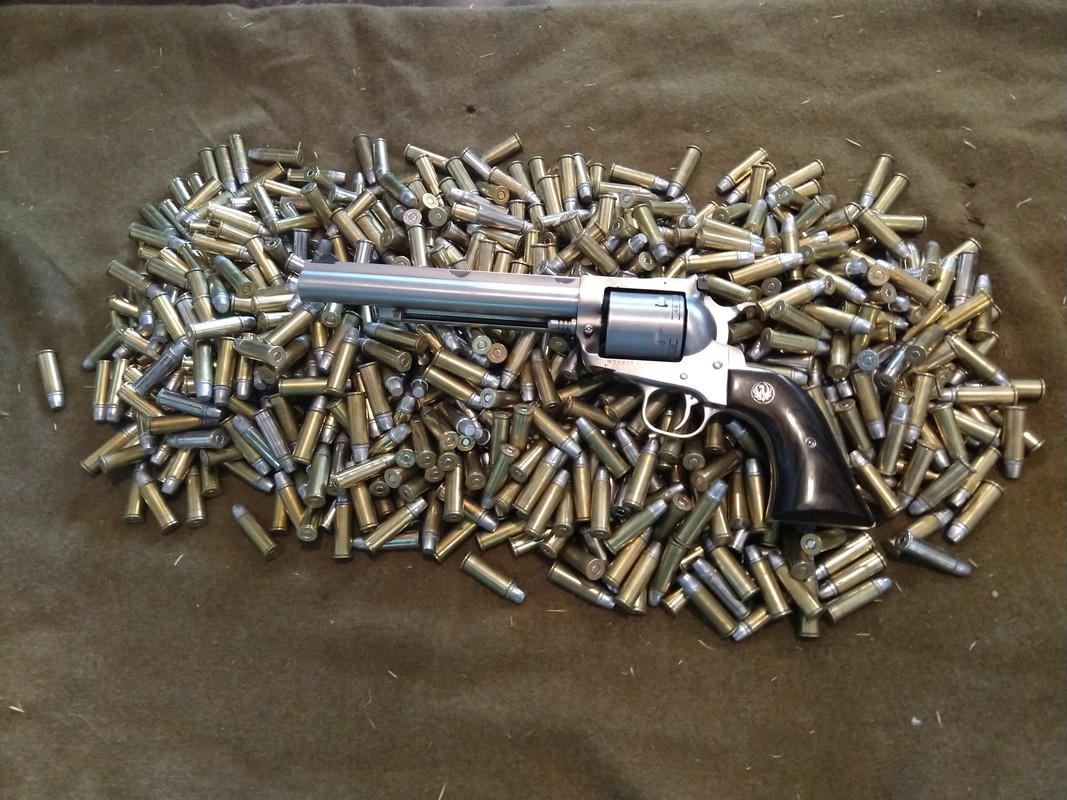So do neck cracks happen during loading? I always head of it happening during firing and being a bad thing....
9mm luger, R-P case, once fired as best as I can tell. the head stamp is crisp and clean.
Loaded 500 of FMJ earlier in the day with the same setup on my newer progressive. Casing resized prior to loading. hand primed.
1 empty
2 lyman m-die expander, just enough to get the .355 in...
3 powder
4 hornady seat
5 Lee carbide factory crimp....
Has run about 100 when I found this one. Check the other 99. No issues.
never had this happen during loading before... Time to call it a night and see if I can figure out what happened tomorrow so I can get started again... Don't want this to become a habit.

9mm luger, R-P case, once fired as best as I can tell. the head stamp is crisp and clean.
Loaded 500 of FMJ earlier in the day with the same setup on my newer progressive. Casing resized prior to loading. hand primed.
1 empty
2 lyman m-die expander, just enough to get the .355 in...
3 powder
4 hornady seat
5 Lee carbide factory crimp....
Has run about 100 when I found this one. Check the other 99. No issues.
never had this happen during loading before... Time to call it a night and see if I can figure out what happened tomorrow so I can get started again... Don't want this to become a habit.
Attachments
Last edited:


